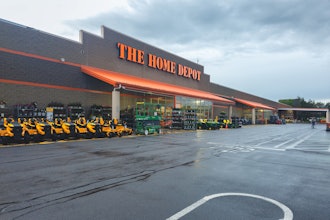FILLING THE B2B ECOMMERCE GAP
110 North 5th Street, 8th Floor
Minneapolis, MN 55403
1.866.746.0377
612.367.8600
www.insitesoft.com
INSITE SOFTWARE: ECOMMERCE STRATEGY CONSULTING
COPYRIGHT © 2013 INSITE SOFTWARE / P 866.747.0377 / WWW.INSITESOFT.COM2
INTRODUCTION
First, the good news: eCommerce continues to enjoy double-digit compound annual growth worldwide, according to
a recent Forrester Research survey. (See Commerce Technology Continues Its Bull Run, a Forrester blog post by Peter
Sheldon.) Those businesses are so bullish that two out of three executives surveyed plan to increase their investment
in eCommerce technology in 2014.
Although B2C eCommerce typically gets the spotlight, it’s actually small potatoes compared to B2B. According to
Forrester, B2B eCommerce is on track to hit $559 billion by the end of 2013 in the U.S. alone — which is more than
double the size of the U.S. B2C market. (See U.S. B2B eCommerce Sales To Reach $559 Billion By The End Of 2013, a
Forrester blog post by Andy Hoar.)
Now the bad news: If your business isn’t among the select few largest global enterprises (an example would
be Grainger, which has annual sales of $8.9 billion and will invest $40 million over the next four years on a new
eCommerce platform), then there is, at best, only a slim menu of B2B eCommerce solutions that might be able to meet
your unique needs.
More bad news: Nearly all eCommerce vendors, regardless of size, have their roots in B2C. To their credit, they
recognize the burgeoning B2B opportunity, which is why so many of them continue to parachute into the B2B market.
But that doesn’t mean they or their products have what it takes to make their customers successful in B2B.
MIND THE GAP
The field of B2B eCommerce vendors has evolved
into two camps: the big three vendors (IBM, Oracle
and hybris/SAP) and a host of much smaller players.
This has created a gap of options for manufacturers
and distributors who need multi-site and enterprise
scalability, speed to market at an efficient and
tolerable cost. (See the graphic on page 3 for a visual
representation of this gap.)
The big three eCommerce vendors focus almost
exclusively on the largest of enterprises for their
customers. Mainly because those big three vendors are
large themselves — they need each contract to be in
the millions or tens of millions to support their largesse.
That’s reflected in their R&D, too, which focuses on
creating solutions that have to be highly customized
(through development and custom code) for each
customer. That, of course, drives up implementation
time and cost. Also, those solutions are difficult (or
simply cost prohibitive) to scale down to fit the budgets
of many enterprises.
Meanwhile, the bottom end of the B2B eCommerce
vendor spectrum is crowded with startups and other
small companies. Like the big three, these smaller
vendors are focused almost exclusively on customers
that look like they do. Their products often lack the
features that many enterprises need to be successful.
One example is deep integration with critical business
systems — such as ERP, CRM, and order management
and fulfillment. The smaller B2B eCommerce vendors
simply don’t have experience integrating with such
systems. Many smaller vendors also lack the internal
resources necessary to support the complex needs
and requirements of customers that need to iterate
to improve on the customer experience they want to
deliver. So it’s no surprise that their product features,
sales efforts, and R&D all continue to focus on small
businesses.
Another problem with the big three and their smaller
counterparts is their mindset. Most of them have their
roots, whether in part or entirely, in the B2C world.
That legacy, perspective and setup creates a variety of
challenges for their customers. For example, besides
the software itself, their customers also frequently have
to buy ongoing professional services and development
contracts to modify B2C-centric software to work in B2B
environments.
Even a professional services contract doesn’t guarantee
that B2C-centric software can adapt. For instance, B2C
shopping carts are fine for consumers who need an
order shipped to one address or, at most, spread across
a couple others, such as for gift giving during the holiday
COPYRIGHT © 2013 INSITE SOFTWARE / P 866.747.0377 / WWW.INSITESOFT.COM3
season. But good luck enabling that shopping cart to
support dozens or hundreds of different addresses for
a single order, such as when a business needs laptops
shipped to all of its telecommuting employees or when
a hardware franchisee needs plumbing fixtures shipped
to its hundreds of stores. B2C-centric shopping carts
also rarely can support …
• Multiple purchase-approval requirements and
hierarchies
• Custom or white labeling
• Customer-specific inventory, pricing and promotions
• Customer-specific budget and purchase
management
• PunchOut: Direct connection of a product catalog to
the customer’s e-procurement system
• Tight integration with the customer’s ERP, CRM and
WCM systems
THE INSITE DIFFERENCE: OUR B2B DNA
All of this illustrates two important points:
1. Options: The majority of enterprises lack
eCommerce platform options that fit their unique
needs and budgets.
2. B2C is not B2B: B2B eCommerce warrants its
own sophisticated approach, not a modified B2C
approach.
Insite Software is the remedy for both problems. But
before we illustrate why, consider first what Forrester
said in its landmark (Q4 2013) B2B Commerce Suites
Wave:
• “Insite Software has a unique position in the market,
in that it is solely focused on B2B eCommerce.
This alone pushes its market presence score in the
Forrester Wave up to match much bigger players —
focus is always a good thing.”
CAPTION
In recent years, the landscape
of B2B eCommerce vendors
has evolved into two
significantly different camps.
On the lower left, you have a
variety of vendors who tend to
focus their product features,
sales efforts, and R&D on
relatively small firms. In other
words, those vendors might
be less expensive than their
competition, but they also
offer more limited platforms. In
the upper right, you have the
“big three,” which have grown
to the point where only the
largest of the large enterprises
can afford the cost and time
to implement their expensive,
complex offerings.
This evolution of the
eCommerce vendor landscape has left a distinct gap in the middle, with little to no options for manufacturers and distributors that need
speed to market and multi-site and enterprise scalability at an efficient and tolerable cost. Until now, that is – Insite Software is ideal to fill
this gap given its affordability, scalability, speed to market, and extensive and exclusive experience in B2B eCommerce. Manufacturers and
distributors now can address their complex eCommerce business challenges and needs via a solution that won’t blow up their budgets or
take an exhaustive amount of time to customize and implement.
COPYRIGHT © 2013 INSITE SOFTWARE / P 866.747.0377 / WWW.INSITESOFT.COM4
This allows our customers to hit the ground running
faster. Instead of needing custom code created from the
ground up, our customers need to only configure and
personalize the last 20 to 30 percent of their pages. In
short, within the time it takes Insite to get a site up and
running, the big three vendors would still be deciding
who will present during the selection process.
As Forrester put it “Without a doubt, Insite is a credible
contender on the Forrester Wave and a viable
alternative to the ‘big three.’” (See “The Forrester Wave:
B2B Commerce Suites, Q4 2013.”)
Many businesses have tried to make do with the
vendors on either side of the gap before turning to
Insite. One example is AmeriPride Services, which
switched to Insite in 2012.
“Insite understood new concepts like ‘omni-channel’
long before the B2C retailers realized the tremendous
value of a multi-channel commerce experience,” says
Joe Jansen, Director Information Services. “B2B is core
to Insite’s DNA. That said, their B2B commerce thought
leadership is proving far more valuable to us as we
navigate the uncharted B2B digital waters.”
Indeed, B2B eCommerce is new territory for many
organizations. That’s why we’re providing a navigational
aid: Forrester’s B2B Commerce Suites Wave, which is a
crash course in the products, vendors, challenges and
considerations that everyone in the enterprise mid-
market needs to know. To download it now for free, click
here.
• “Insite has an impressive customer install base and
has been recently competing with and, in some
cases, winning deals against larger competitors.”
(See “The Forrester Wave: B2B Commerce Suites,
Q4 2013.”)
Insite has specialized in the commerce needs of
manufacturers and distributors for nearly a decade,
so it’s in our DNA. We are 100% focused on the
unique and complex eCommerce needs of B2B
and B2B2C organizations. And Insite provides
manufacturers, distributors, and other businesses
with a competitive edge — a platform that can be
implemented quickly, integrated tightly, and doesn’t
require extensive costs for custom coding. The
Insite advantages are …
• No overpaying for more than you need.
• No worrying whether a vendor has the scale to
support an organization your size, especially as you
grow.
• Many Insite customers are up and running in 90 to
120 days and for a fraction of what they would pay
for a solution from the big three.
• Our configuration (not customization) allows for
personalization and is flexible enough so customers
can make changes themselves as their business
needs evolve.
• Insite’s solution integrates with inventory, supply
chain, and other back office systems.
But don’t take just our word for it. Our customer base
speaks for itself: Great Northern Corp., Merial Corp.,
AmeriPride Services, Carnival Cruises, Mitsubishi
Electric, the Natori Co., and Riedell Skate Co., among
many others.
There is no doubt that any B2B eCommerce project
is complex. But, as described earlier, the level of
customization required (time and effort) when installing
a platform from the big three simply isn’t feasible or
warranted for enterprises outside of the largest of the
large. Insite addresses the complexity of manufacturer
and distributor business processes via our library of
best practice web pages. These hundreds of web page
options are already configured with robust requirements
and lessons learned from nearly 10 years of B2B
eCommerce execution.
COPYRIGHT © 2013 INSITE SOFTWARE / P 866.747.0377 / WWW.INSITESOFT.COM5
ABOUT INSITE SOFTWARE
Insite Software is the leading eCommerce and shipping platform provider for manufacturers and distributors requiring
B2B, B2C, and mobile solutions. Approaching 1,000 customers globally, InsiteCommerce™ is used by many leading
companies for end-to-end eCommerce across their dealers, franchisers, stores, contractors, consumers, and others.
Many of Insite’s customers also leverage InsiteShip™, which is an internationally enabled supply chain shipping solution
to gain efficiencies in shipping and delivery of products. Both enterprise offerings are fully integrated with the leading
ERP, content management and many other cloud platforms. Learn more at www.insitesoft.com and connect with us via
Facebook, LinkedIn and Twitter.
Filling the B2B eCommerce Gap
The field of B2B eCommerce vendors has evolved into two camps: the "big three" vendors who focus almost exclusively on the largest enterprises, and a host of much smaller B2C players trying to fit in with B2B commerce. This has created a gap of options for manufacturers and distributors who need multi-site capabilities, enterprise scalability, speed to market, and efficient costs. Read the white paper to find out how an eCommerce solution built especially for the unique and complex needs of B2B organizations fills this gap and is the best choice when choosing a vendor.
Latest in Home
Hillman Signs Deal for Suburban Cincinnati Campus
September 9, 2025
Optimas Solutions Adds Singapore Subsidiary
September 8, 2025
Graybar to ‘Significantly’ Increase U.S. Warehouse Capacity
September 5, 2025


















